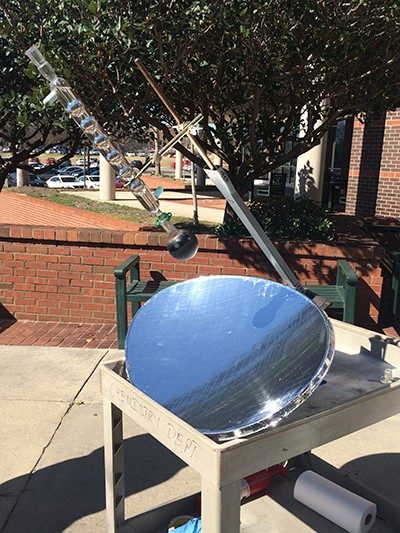FOR IMMEDIATE RELEASE | August 22, 2021
Making nylon 6-6 ‘greener,’ and without zinc
Note to journalists: Please report that this research will be presented at a meeting of the American Chemical Society.
A media briefing on this topic is available at www.acs.org/acsfall2021briefings.
ATLANTA, Aug. 22, 2021 — Outdoor stadium seats, ski bindings, tire reinforcements and other products that require strength, durability and weather resistance are all made with a type of nylon called nylon 6-6. However, producing this material requires an environmentally unfriendly process, the first step of which uses the endangered element zinc as a catalyst. Now, researchers have developed “greener” methods for this step that use alternative metals. They might even be able to substitute waste iron in the form of rust, or ferric oxide, for the endangered element.
The researchers will present their results today at the fall meeting of the American Chemical Society (ACS). ACS Fall 2021 is a hybrid meeting being held virtually and in-person Aug. 22-26, and on-demand content will be available Aug. 30-Sept. 30. The meeting features more than 7,000 presentations on a wide range of science topics.
“According to estimates from the ACS Green Chemistry Institute, zinc is only 50 to 100 years away from being extinct,” says Amina Aly, an undergraduate student who is presenting the work at the meeting. “And currently, manufacturers use zinc as the reducing agent and catalyst for making cyclohexene from trans-1,2-dibromocyclohexane, which is the first step in the five-step synthesis of nylon 6-6.”
“Nylon” is a general term for a family of synthetic polymers, called polyamides, that are made of repeating units. Different types of nylons, such as nylon 6 and nylon 6-6, use different building blocks and therefore have unique properties. Nylon 6-6 is so named because it’s composed of two molecules, each having six carbon atoms, that are linked together as the repeating unit.
To find a substitute for zinc, Aly, who is in the lab of Brian Agee, Ph.D., at Augusta University, looked to other metals that were nearby in the periodic table and had similar chemical properties. Other criteria were that the metals needed to be more abundant than zinc and safe to work with. The team chose to study cobalt, aluminum, iron, copper and nickel as possible catalysts in the production of cyclohexene. In addition, the researchers wanted to identify greener methods that save energy and water, while using less harsh chemicals. So, they incorporated a solar reflective dish instead of an electric hot plate and a water-saving condenser in place of a regular condenser. Also, the team swapped propylene glycol for the more hazardous ethylene glycol as the heat-transfer agent in the water-saving condenser, which cools the reaction without needing a continuous flow of cold water like regular condensers.
Aly found that iron was the best catalyst tested so far, with only slightly lower yields than zinc. “We also found that solar energy really is the way to go when it comes to this synthesis because the sun is a lot stronger than any hot plate you’re going to find, and a lot faster,” she says. Conducting the synthesis outside with a solar reflector required only 30 minutes, compared with 3-4 hours in the lab using a hot plate. The researchers also found that increasing the time of reflux — heating the reaction for a specific amount of time and using a condenser to continuously cool the produced vapors to convert them back into liquid form — from 15 minutes to 30 minutes substantially increased the yield. “Since we’re using the radiant energy of the sun, we’re not wasting electricity with extra heating,” Agee notes. The researchers say their methods could be easily scaled up for industrial nylon 6-6 manufacturing.
Although iron is an abundant metal, Aly and Agee want to try catalyzing the reaction with an even more environmentally friendly iron waste product that can be found anywhere metal is left outside to get wet: ferric oxide, or rust. “If ferric oxide purchased from a chemical company works for the reaction, I’m seriously considering going to my parents’ place and scraping a little rust off their barn to try,” Agee says. “Because as a green chemist, what better source for a catalyst than something you can get anywhere?”
The researchers acknowledge support and funding from Augusta University.
To automatically receive press releases from the American Chemical Society, contact newsroom@acs.org.
Note: ACS does not conduct research, but publishes and publicizes peer-reviewed scientific studies.
Media Contact
ACS Newsroom
newsroom@acs.org
View larger image


